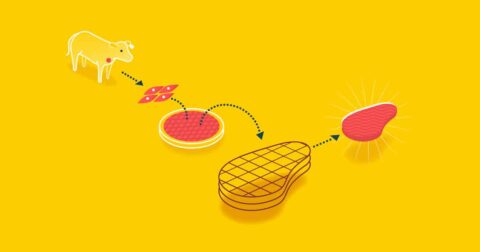News
Could Genetically Engineered Fungus Help Replace Animal Protein?
Breakthroughs•5 min read
Reported
New systems are changing what we eat, how it is made, and who makes it. These changes could expand access to high-quality food while reducing environmental impacts.


Words by Sentient Media
The global food system has undergone dramatic changes over the past century. What was once a small network of independent farms is now a loud, face-moving supply chain shipping products around the globe. This transition, which has picked up pace in recent years, is due in no small part to the advent of new technologies, many of which deserve as much criticism as praise.
Technology has changed almost all aspects of the way we live. Even the food we eat has been affected by technology. New systems are changing what we eat, how it is made, and who makes it. These changes could expand access to high-quality food while reducing waste and environmental impacts.
Lab-grown meat is a major food technology trend. Lab-grown meat uses less land and water than factory farming. Companies are also optimizing food distribution to minimize food waste. Real-time tracking enables food producers to closely match demand. Food is even being upcycled and reused to keep it out of landfills.
The impact of some food technology is more complicated. Robots are replacing workers in farms, processing plants, and even restaurants. This automation opens up high-skill jobs in the food sector.
Automating tedious or hazardous work can improve worker safety, but broad automation also puts manual workers’ livelihoods at risk. It is important to use these technologies carefully to ensure an equitable and sustainable food future.